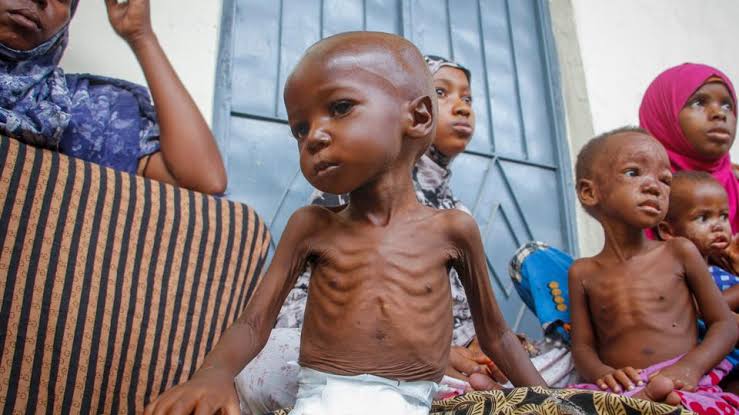In today’s fast-paced world, nutritional imbalances are more common than ever, yet they often go unnoticed until serious health problems arise. The effect of malnutrition and overnutrition can be life-altering, affecting physical development, mental well-being, immunity, and overall quality of life. Whether it's the silent struggle of undernourishment or the overwhelming rise of diet-related chronic diseases due to excess intake, both are part of the same coin, malnutrition and its types. At Jannis Health, we believe your nutrition should empower you, not limit you.
Why are so many people still malnourished despite eating every day? How can someone look healthy but still lack essential nutrients? Are you unknowingly overnourished from processed foods and sugary drinks? And most importantly, how do you overcome these nutritional problems before they escalate into chronic illnesses like diabetes, heart disease, or fatigue and weakened immunity?
This page is your guide to understanding the effect of malnutrition and overnutrition, identifying the subtle warning signs, and learning how to overcome nutritional problems with practical, evidence-based strategies. With support from our expert dietitians at Jannis Health, you’ll not only spot the red flags early but also discover how to take back control of your health with a balanced, personalized nutrition plan that works for your lifestyle.
What Is Malnutrition?
Malnutrition isn’t just about not eating enough, it’s about not getting the right nutrients in the right amounts. It refers to an imbalance in nutrient intake, and it comes in two main forms: undernutrition and overnutrition. Both can have serious consequences on health, development, and overall quality of life.
The Two Main Types of Malnutrition:
The two main types of Malnutrition include
- Undernutrition
- Overnutrition.
What is Undernutrition?

Undernutrition is a major form of malnutrition that occurs when the body doesn’t get enough energy, protein, or essential vitamins and minerals to function properly. It’s especially harmful during key stages of growth and development, such as infancy, childhood, and pregnancy.
Effects of Undernutrition
The effects of undernutrition can be devastating and long-term, especially when not addressed early. They include:
- Wasting – A rapid weight loss or failure to gain weight, usually due to acute food shortage or illness
- Stunting – Poor growth in height for age, often due to chronic undernutrition
- Underweight – Low weight for age, reflecting both acute and chronic undernutrition
- Micronutrient Deficiencies – Lack of vital nutrients such as:
- Iron – Can lead to anemia and fatigue
- Vitamin A – Impairs vision and immune response
- Iodine – Affects brain development and thyroid function
- Zinc – Weakens immunity and delays wound healing
Undernutrition weakens the immune system, stunts physical and mental development, and increases the risk of infections and diseases. Tragically, millions of children across the world suffer from undernutrition, limiting their learning, productivity, and potential.
What Drives Undernutrition?
Several environmental, economic, and social factors contribute to undernutrition, including:
- Poverty and food insecurity – Limited access to nutritious food
- Poor agricultural practices – Soil depletion reduces food nutrient quality
- Frequent illness or infections – Conditions like diarrhea or intestinal worms hinder nutrient absorption
- Inadequate breastfeeding and early weaning – Can deprive infants of essential early nutrients
- Lack of nutrition education – Leads to poor food choices, even when food is available
- Poor sanitation and unsafe water – Increase the risk of infections and nutrient loss
In some families, the food may be available, but not nutritious. And in many low-income communities, even basic essentials like clean water and fortified staples are out of reach.
What Is Overnutrition?

Overnutrition is the less visible but equally dangerous side of malnutrition. While undernutrition is often linked to hunger, overnutrition results from excessive intake of calories, often combined with poor-quality food choices. It’s not just about eating too much, it’s about eating too much of the wrong things.
Effects of Overnutrition
Over time, overnutrition leads to serious health risks such as:
- Obesity – Excess fat accumulation that increases the risk of other diseases
- Type 2 Diabetes – Often triggered by poor dietary habits and insulin resistance
- Heart Disease – Due to high cholesterol, blood pressure, and inflammation
- Certain Cancers – Linked to processed food consumption and obesity
These conditions are classified as non-communicable diseases (NCDs) and are now leading causes of death globally, even in developing countries.
What Drives Overnutrition?
A variety of modern lifestyle factors contribute to overnutrition:
- High consumption of ultra-processed foods loaded with sugar, salt, and unhealthy fats
- Sedentary lifestyles, especially in urban settings with limited physical activity
- Aggressive marketing of sugary snacks and beverages, particularly targeting children and teenagers
Perhaps most surprising is that overnutrition and undernutrition can coexist in the same household. One child may be underweight while another is overweight, not because of food quantity, but due to poor food quality and lack of balanced meals.
At Jannis Health, we understand that the effects of malnutrition and overnutrition go far beyond appearance; they impact your heart, brain, mood, and long-term wellness. Our expert team is committed to helping families overcome nutritional problems through personalized plans, dietary counseling, and ongoing support.
| Book a session today with our registered dietitians at Jannis Health and take the first step towards balanced, healthy living for you and your loved ones. |
Why Addressing Malnutrition Matters
The effect of malnutrition, whether caused by lack or excess, goes far beyond hunger or weight gain. Both malnutrition and overnutrition diminish quality of life, burden healthcare systems, reduce productivity, and increase the risk of chronic illnesses and early death. In childre,n especially, malnutrition robs them of the opportunity to grow, learn, and thrive. It's a silent crisis that affects individuals, families, and nations alike.
How to Overcome Nutritional Problems and Curb the Double Burden
To tackle the different types of malnutrition, from nutrient deficiencies to obesity, we must take a holistic, community-focused approach. Here’s how:
#1. Education is Key
Nutrition literacy is foundational. From households to classrooms, people must be empowered with knowledge about what to eat and why it matters. Teaching the impact of poor dietary choices early helps prevent both undernutrition and overnutrition in the long run.
#2. Consultation with Nutrition Experts
At Jannis Health, we emphasize that professional guidance saves lives. A registered dietitian-nutritionist helps diagnose, prevent, and manage issues related to malnutrition and overnutrition. Whether you're dealing with nutrient deficiencies or weight-related concerns, personalized nutrition care can transform your health outcomes.
#3. Improve Access to Healthy Foods
Addressing nutritional problems begins with access. Governments, NGOs, and local initiatives must focus on making:
- Fruits, vegetables, legumes, and whole grains are affordable and accessible
- Nutritious foods are available in both rural and underserved urban communities
#4. Fortify the Right Foods
Adding essential micronutrients like iron, iodine, and vitamin A to everyday staples (e.g., flour, salt, and cooking oil) is a cost-effective way to prevent common deficiencies, especially in vulnerable populations.
#5. Regulate and Reform Food Systems
Combatting overnutrition means:
- Restricting the marketing of sugary, ultra-processed foods—especially to children
- Promoting easy-to-understand food labeling
- Encouraging healthier reformulations of popular packaged foods
#6. Support Local Food Production
Backyard gardens and small-scale farming provide families with direct access to fresh, nutrient-dense foods. Supporting local agriculture also builds food security and reduces reliance on nutrient-poor convenience foods.
#7. Promote Physical Activity
Nutrition isn’t the only factor. Cities and communities must create environments that encourage movement through walkways, parks, and active recreation spaces. A sedentary lifestyle often fuels overnutrition and its associated health risks.
| At Jannis Health, we are committed to helping individuals and communities fight back against all forms of malnutrition. Our team of certified nutrition experts is here to guide you with personalized care, practical tips, and proven solutions. |
Final Takeaway: It’s Not About Eating More or Less — It’s About Eating Right
The true battle against malnutrition and overnutrition isn’t just about quantity, it’s about quality, education, access, and balance. Whether it's undernutrition or the silent dangers of overnutrition, the solution lies in making the right food choices that meet your body’s unique needs.
Bridging the gap between hunger and excess means creating a world where every child, woman, and man receives just the right nutrients, not too little, not too much, but just enough to fuel a strong, healthy life.
At Jannis Health, our Registered Dietitians and Nutritionists are trained to help you overcome nutritional challenges and make empowered food decisions. Whether you're dealing with deficiency, weight issues, or simply want to improve your well-being, we’re here to guide you every step of the way.
 | Book a personalized consultation with Jannis Health today, and start your journey to balanced nutrition and lasting wellness. |
Frequently Asked Questions About Effect of Malnutrition and Overnutrition
What is the difference between malnutrition and overnutrition?
Malnutrition refers to an imbalance in nutrient intake, it can mean too little (undernutrition) or too much (overnutrition). Undernutrition leads to stunting, wasting, and micronutrient deficiencies, while overnutrition leads to obesity and non-communicable diseases like diabetes and heart problems.
Can overnutrition and undernutrition exist in the same household?
Yes. In many low-income families, one child may be undernourished due to a lack of food, while another is overweight due to poor food quality. This reflects the double burden of malnutrition.
Where can I get professional help for nutritional issues?
At Jannis Health, we provide expert consultations with Registered Dietitians and Nutritionists who specialize in preventing and managing malnutrition and overnutrition. Book an appointment today for a customized nutrition plan.






Comments